Location
The church, which overlooks Via Zimara, Piazza Galluccio square, still in the historic center, was home to one of the oldest brotherhoods of Salento and still retains traces of ancient splendor. It rises austere upwards, with a linear façade, almost opposite the complex of the Clarisse monastery, which will be erected not long on that same street in the historic center. This verticality of the church had to appear even greater, and impress even more in the past, when all the current Piazza Galluccio did not exist at all and the corresponding square was covered with the typical low buildings of the historical center, with the prospect of this facade dictated exclusively by the width of via Zimara. It is certain, however, that in an even older perspective the facade of the church was differently marked by that large square-garden, in front of the church, on which was then implanted the whole complex of the Poor Clares.
Prospectus
The façade, modest, with only one entrance surmounted by an arch containing a panel in Lecce stone, free of horizontal partitions, is adorned with the elegant decoration of the portal. Two semi-columns covered with thin vertical grooves are supported by tall plinths carved with ornamental motifs. These columns support the architrave adorned with floral carvings, on which the following epigraphs can still be found: IANVA CONSTRVCTA ETS (!) CHRISTICOLARVM SVFFRAGIIS PRIORATVM GERENTE FRANCISCO IMBINO ET MICHINO PAPADIA POMPEIO STASI OECONOMI COETERISQ. PIIS CONFRATRIBVS, on the upper frame; FRATER QVI ADIVVATVR A FRATRE QVASI CIVITAS SIGNATURE ET IVDICIA QVASI VECTES CONFRATERNITATVM 1579, on the lower one. On the architrave there is a lunette with a depiction of the Madonna della Misericordia in high relief, with a mantle supported by two angels. A festoon of heads of angels on the crown of the lunette and, again, a full-length angel on the right, with a cartouche on which we read: NOS QVOQ. TE DEI PAPAM. The façade contains two niches, barely hinted at, which once housed the frescoes that today are illegible, and, placed on the axis with the portal, a large window on which one reads: "Praise always be the name of Jesus and his pious Mother"; next to it, two more windows, even if a little smaller, for greater daylight illumination of the interior.
Interior and Altars
The interior is also simple, with just one large ship, made up of only one environment, large and modest together. Entering from the entrance of the church we find ourselves immersed in it and in front, on the bottom, opens an apse on whose arch is inscribed the following inscription / prayer: PURE PUDICA PIA MISERIS MISERERE MARIA.
The presbyteral area of the church houses five altars: the High Altar which, with the title of the Virgin of Mercy, is placed in the small apse and is surmounted by a niche, where the wooden statue of Our Lady is placed in prayer; on the sides of it, still in the apse, two other altars a little smaller, with privilege. Finally, at the bottom of the nave, placed in an angular position before the apse, still in the presbytery, the other two: the altar of the Crucifixion, with a seventeenth-century painting of the SS. Crucifix, donated in 1633, placed on the right of the church, in cornu epistolae; and the altar of the SS. Trinity, also enriched by a beautiful canvas of the same subject, placed on the left, in cornu evangelii, erected in 1663 and officiated by the association of the confreres.
Tele
Besides the two paintings mentioned above, it is worth mentioning here, among the large paintings that make up the rich patrimony of the church, the following: the Nativity, the Adoration of the Magi, the Purification of Mary-Presentation of Jesus in the Temple, the Dispute with the doctors. Among the smaller ones that adorn the side walls, depicting scenes of Marian life, the following: Presentation of Mary, Marriage of the Virgin, Presentation of Jesus, the Assumption to Heaven, the Annunciation to Mary and the Immaculate. The great fresco of Maria Assunta in Cielo still remains to be admired, enclosed in the large central oval of the vault, an autograph work by the gallipolino Agesilao Flora, at the base of which is also the signature date of the execution, with the inscription "A. Flora 1897 ".
Do not forget the case with the scourges of the confreres.









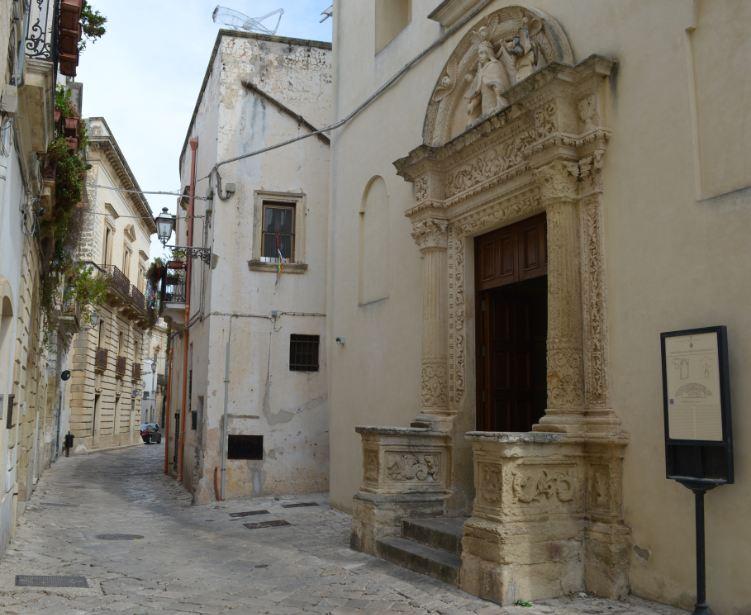
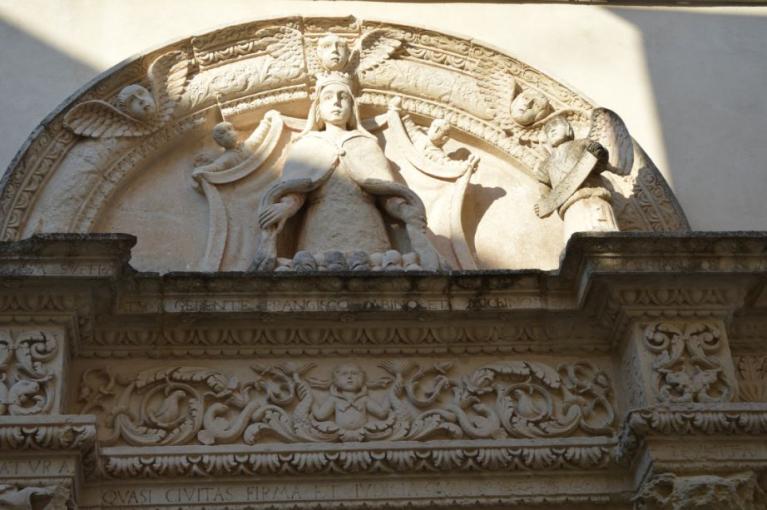
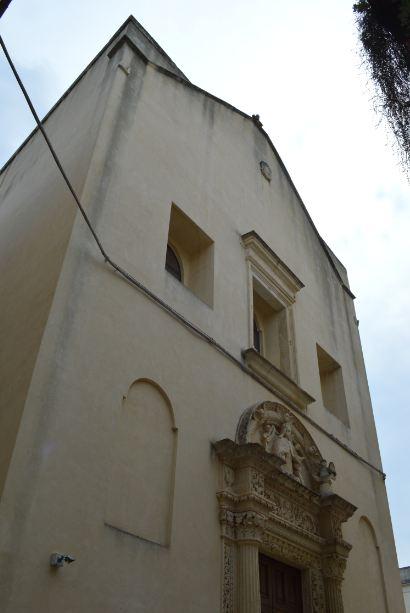
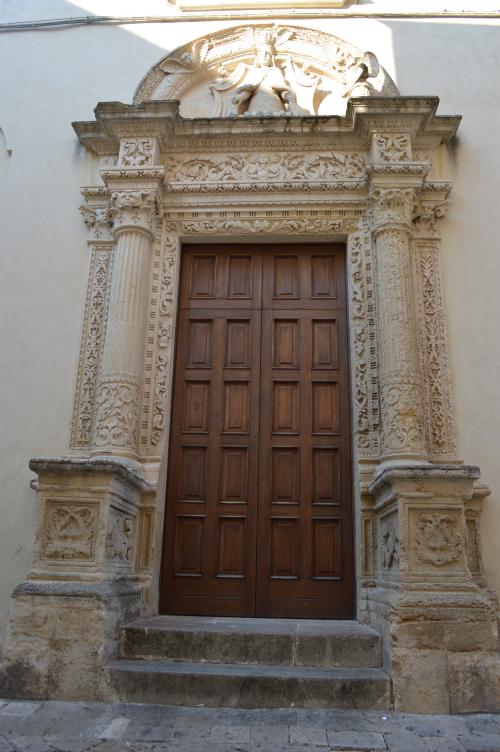
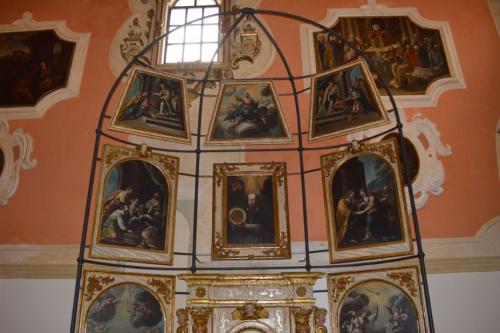
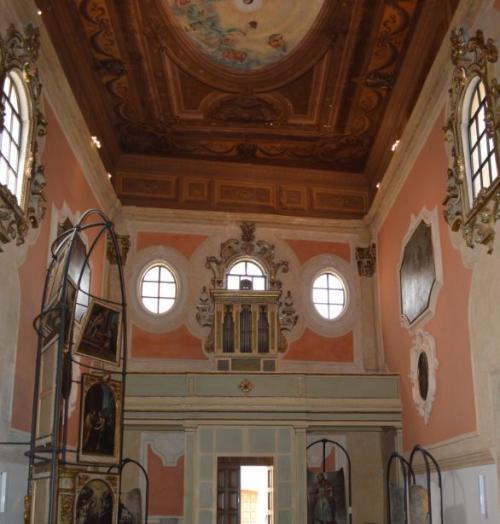
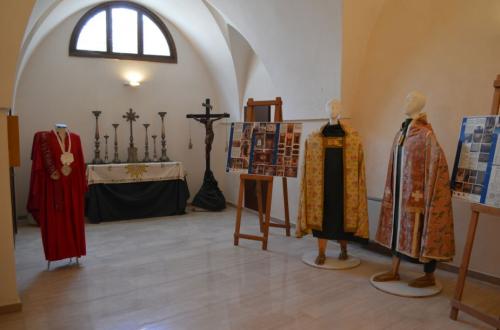
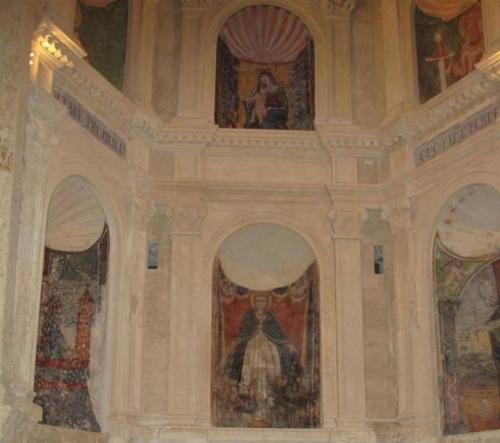
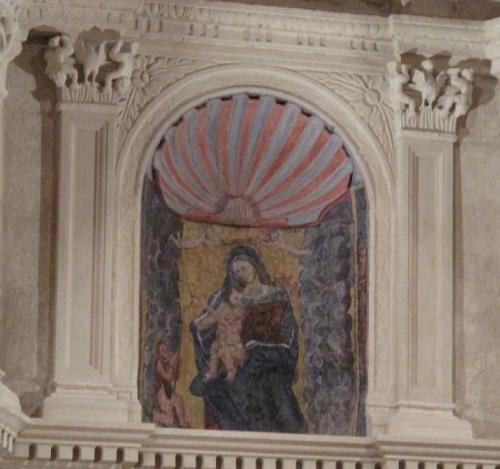



 Join VisitGalatina
Join VisitGalatina